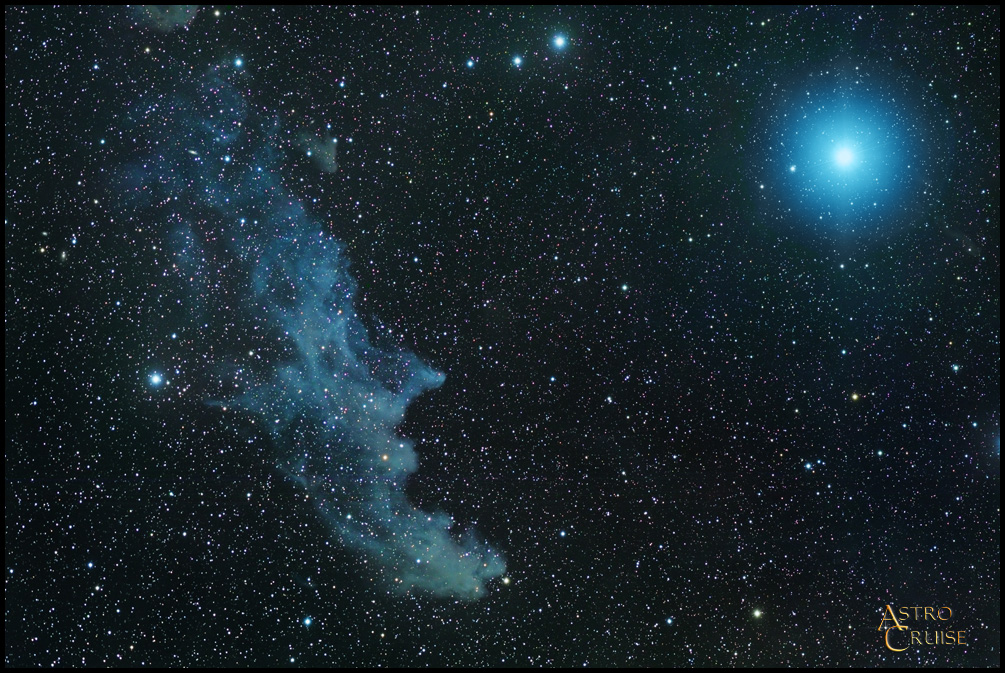
 |
Object Data: The Witch Head Nebula (IC 2118) in the constellation of Eridanus is a very large irregular cloud of dust and gas lying 2.6° to the west of Rigel in Orion. Rigel, visible to the upper right of this image, is a blue supergiant, 800 light years distant, with a visual magnitude of 0.2 - the brightest star in Orion and the sixth brightest star in the night sky. Its radiation is so powerful that it illuminates the IC 2118 complex from a distance of approximately 40 light years. How much would our sun illuminate the nebula from that distance? Hardly at all, but then Rigel is 40,000 times brighter, and its blue colour helps. IC 2118 shines in a blue colour not only because Rigel's light is blue, but also because the dust particles that comprise the nebula reflect blue light more efficiently than red. The origin of IC 2118 is not precisely known, however it is believed to be an ancient supernova remnant; certainly most gases capable of ionization seem to have dissipated long ago - there is hardly any trace of Ha emission, though there may be residual OIII emission, suggested by some slightly greenish parts of the nebula. Note that this image is inverted in order to show the witch head, thus south is at the top.
Date: 07/11/2008
Location: Southern France
Conditions: Calm, moderate dew, transparency=9, seeing=7
Optics: Takahashi FSQ-106ED f/5 working at f/3.6 with focal reducer
Mount: AP 900 GTO on Portable Pier
Camera: SBIG STL-11K, SBIG LRGBC filter set, -25°C
Guiding: Integral STL-11K autoguider
Exposure: Normal LRGB Seq: 18x 5 minutes; 3x 5 : 3.2 : 5 minutes (binned 2x2).Processing: Image acquisition, calibration, and initial processing using Maxim DL, subsequent processing in RegiStar and Photoshop.
Notes: This faint object is quite difficult to image from southern France owing to its low elevation (average elevation was about 30° during the exposures) - this causes blue light to be attenuated far more than red light. The difficulty is increased owing to the large area of sky (approx 5°) covered by this image, inevitably introducing strong gradients at this low elevation.
|
|
|
|